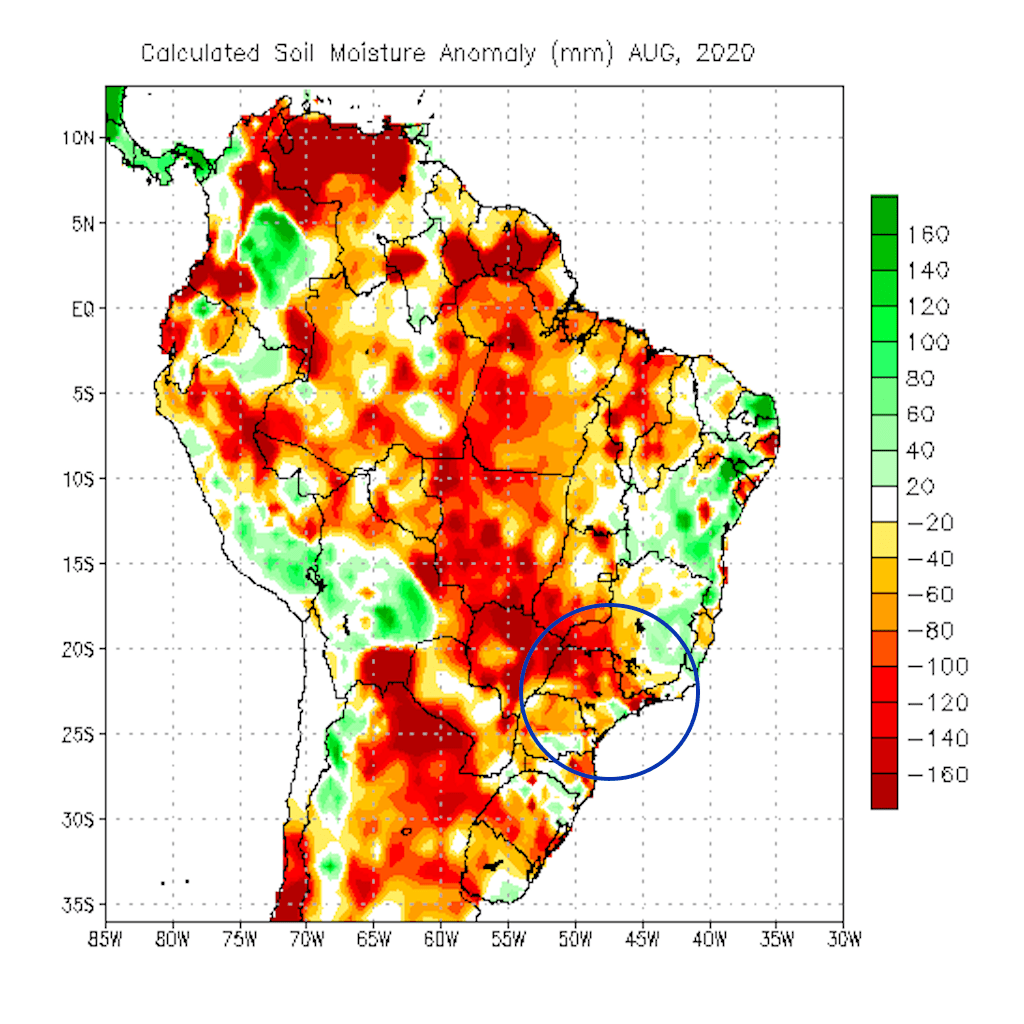La Niña is here and according to the Climate Prediction Center, there are 75% chances that it will continue until January or February next year.
This post is an update on the information that we published one month ago regarding the probability of La Niña happening this winter and the potential implications for agriculture across the globe.
There are no two La Niña events that are the same. The event intensity and duration can change, as well as the correlation with another climatic phenomenon. Therefore, the consequences of La Niña happening can manifest differently from one occurrence to the next. However, in general, it is observed that when La Niña is here, weather is drier in South America and rainier in South-eastern Asia until December.
Peanut production in Latin America
While peanut planting should start within 1 month in Brazil and soon after in Argentina, conditions are already very dry in the main peanut regions (Córdoba in Argentina & São Paulo in Brazil). With La Niña, this drought might persist in the coming months, which would have heavy consequences for peanut production and agriculture in general in South America. We hope that some rain will arrive and improve the soil moisture conditions as farmers cultivating winter crops, like wheat, have already been suffering during the past weeks.
Cashew production in Vietnam
In Southeast Asia, La Niña usually brings the opposite consequences compared to South America. The weather is wetter with more rainfall. In Vietnam the dry season usually starts around December, allowing Cashew trees to blossom. But if the rain keeps on happening, flowering would be delayed and the production could be impacted. Nevertheless, December is still far ahead and conditions regarding La Niña could change. We will keep you updated!
Don’t forget to read our latest peanut market report that came out 2 days ago! → Peanut market report September 2020





 We use cookies to ensure you get the best experience on our website. For more information, please read our
We use cookies to ensure you get the best experience on our website. For more information, please read our